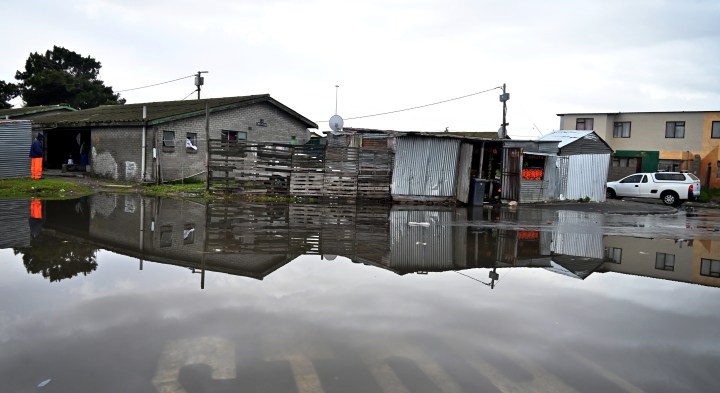Business Maverick
Most of SA still seen wetter, warmer than normal through to spring – Weather Service

As El Niño takes hold, most of South Africa is still expected to be wetter and warmer for the remainder of the winter and into spring - with a couple of exceptions. This is according to the latest monthly Seasonal Climate Watch by the South African Weather Service which looks five months ahead.
The winter of 2023 will remain wet and warm for most of South Africa, which is good news as El Niño – which typically brings drought to this region – sets in. Winter grain crops such as wheat should benefit from this state of affairs while dam and ground moisture levels around the country will need all the rain they can get in advance if this El Niño turns out to be a scorcher.
“The El Niño-Southern Oscillation (ENSO) is currently transitioning into warm El Niño-like conditions and is moving into an El Niño state which according to the latest predictions is expected to persist through most of the summer months,” the Weather Service said in its latest monthly Seasonal Climate Watch.
ENSO is a recurring pattern triggered by changes in ocean surface temperatures in the central and eastern Pacific Ocean that impacts the global climate. A prolonged La Niña phase, a cooling of such waters which brought good rains and bumper crops to much of South Africa the past three to four years, has ended. And after a brief “neutral” period those waters are heating up again, heralding El Niño.
“It is still too early to indicate whether this El Niño event will persist through the whole of the summer season,” the report cautioned.
Early predictions suggest “a moderate to strong El Niño” and if it becomes prolonged, the consequences could be dire. The 2014-2016 event blazed a trail of misery across Southern Africa, hammering yields for staple crops such as maize and decimating livestock and game herds. Dam levels plunged, raising the twin specter of food and water insecurity.
Ominously, marine temperatures are currently off the charts.
“The surface temperatures of about 40% of the global ocean are already high enough to meet the criteria for a marine heatwave,” the US National Oceanic and Atmospheric Administration (Noaa) said late last week. “No doubt, we’re in hot water,” said Dillon Amaya, a research scientist and a co-lead of Noaa’s June 2023 marine heatwave experimental outlook. “In our 32-year record, we have never seen such widespread marine heatwave conditions.”
So with a potential corker of an El Niño looming, any rainfall now is welcome as South Africa is still in the grip of a cost-of-living crisis which has seen food prices soar, leaving many poor households literally hungry.
“The multi-model rainfall forecast indicates above-normal rainfall for most of the country during winter (Jul-Aug-Sep) through to early-spring (Aug-Sep-Oct) with below-normal rainfall predicted over parts of the country in the west and the east during mid-spring. Minimum and maximum temperatures are expected to be mostly above-normal countrywide for the forecast period,” the Seasonal Climate Watch said.
The warmer-than-usual temperatures will also contain household power demand which peaks in the winter and so should help to curtail the rolling blackouts that have been slashing economic growth, fueling inflation and thwarting investment.
But it will be of concern in parts of the west and east of the country if the mid-spring as currently forecast is a relatively dry one.
Stay tuned folks – things may really heat up and dry out after this warm, wet winter. DM

















 Become an Insider
Become an Insider
This is likely to wake some politicians out of a denialist slumber; we have had the benefit of the wetter oscillation for the past three years, now as the natural weather phenomena coincide with anthropogenic climate change, the birds will come home to roost! My rainwater harvesting system is working well, but storing enough water for major shortages is not easy!